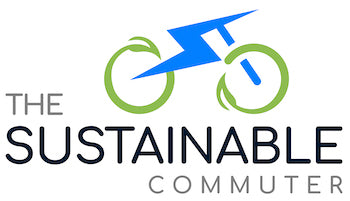Transportation plays a crucial role in our daily lives, allowing us to travel from one place to another with ease. However, the way we currently transport ourselves and goods is not sustainable in the long run. The transportation sector is a major contributor to greenhouse gas emissions, air pollution, and congestion, all of which have detrimental effects on our environment and public health. In order to address these challenges and ensure a sustainable future, it is essential that we create a transportation system that is environmentally friendly, efficient, and accessible to all.
Transition to Electric Vehicles (EVs)
One of the key strategies for achieving sustainable transportation is the transition to electric vehicles (EVs). Electric vehicles are powered by electricity, which can be generated from renewable sources such as solar and wind. Unlike conventional vehicles that run on fossil fuels, EVs produce zero tailpipe emissions, reducing air pollution and greenhouse gas emissions. In addition to their environmental benefits, EVs also provide economic advantages, such as lower fuel costs and reduced maintenance requirements. There are several companies leading the way in the development and production of electric vehicles. Tesla, for example, is known for its innovative electric cars that have revolutionized the industry. The company's commitment to sustainability is reflected in its mission to accelerate the world's transition to sustainable energy. Another notable company is Volkswagen, which has made significant investments in electric vehicle technology and plans to launch a wide range of electric models in the coming years.
Promoting Public Transportation
Public transportation is another key component of a sustainable transportation system. Public transportation, such as buses, trains, and trams, allows for more efficient and sustainable travel by reducing the number of individual cars on the road. By encouraging people to use public transportation, we can reduce congestion, lower greenhouse gas emissions, and improve air quality. Companies like Uber and Lyft have revolutionized the way we think about public transportation. These ride-sharing platforms provide convenient and affordable transportation options, effectively reducing the need for individual car ownership. By utilizing existing vehicles and optimizing routes, these companies are able to reduce the number of cars on the road, resulting in less traffic and pollution.
Investing in Infrastructure
Investing in infrastructure that promotes biking and walking is another important aspect of creating a sustainable transportation system. Biking and walking are not only environmentally friendly modes of transportation, but they also have numerous health benefits. By providing safe and accessible infrastructure, such as bike lanes and pedestrian-friendly sidewalks, we can encourage more people to choose these sustainable modes of transportation. Companies like Google Maps and MapMyRide have developed innovative tools to help people navigate and plan their bike and walking routes. These apps provide information on bike lanes, walking paths, and other infrastructure, making it easier for individuals to choose biking or walking as their preferred mode of transportation.
Implementing Policies
Government policies and regulations play a crucial role in creating a sustainable transportation system. By implementing policies that promote the use of electric vehicles, public transportation, and sustainable infrastructure, governments can incentivize individuals and businesses to make sustainable choices. The Environmental Protection Agency (EPA) is one example of a government agency that has implemented policies to reduce greenhouse gas emissions from the transportation sector. The EPA's Clean Air Act sets emission standards for vehicles and encourages the use of clean technologies, such as electric vehicles.
Conclusion
Creating a sustainable transportation system is essential for our future. By transitioning to electric vehicles, promoting public transportation, investing in biking and walking infrastructure, and implementing policies and regulations, we can reduce our reliance on fossil fuels, reduce air pollution and greenhouse gas emissions, and improve public health. It is crucial that individuals, businesses, and governments work together to create a transportation system that is environmentally friendly, efficient, and accessible to all.

